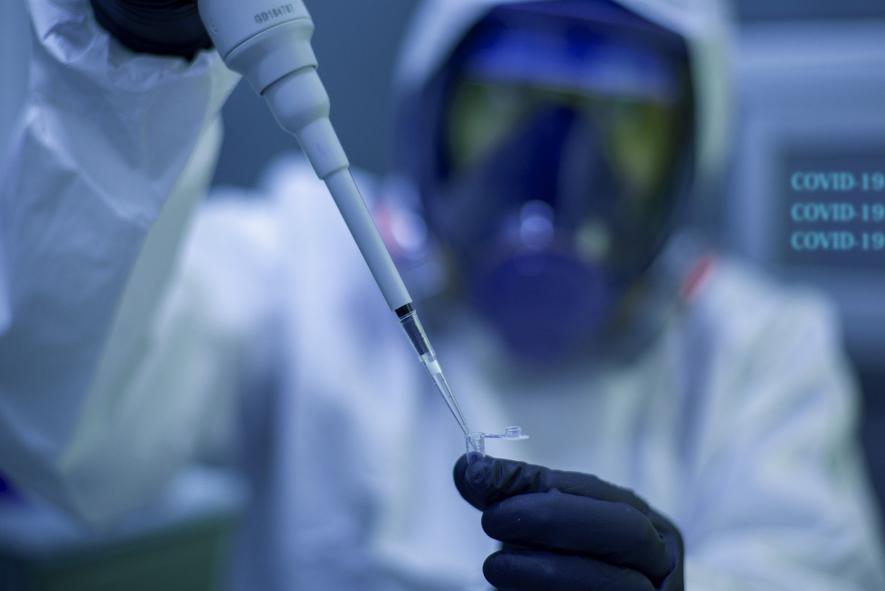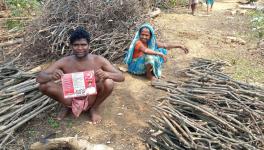COVID-19: Good News on the Vaccine Front but Challenges Remain

Image by fernando zhiminaicela from Pixabay
The scientific community has responded to the COVID-19 pandemic in a way that would have been thought of as impossible earlier. Within only 12 months, we are now likely to have a set of vaccines for COVID-19. This is an astounding achievement, as the fastest vaccine development till date – for mumps – took nearly four years. Equally important is that the first four vaccine candidate frontrunners—Pfizer-BioNTech, Moderna, Oxford-AstraZeneca, Gamaleya—have all shown an efficacy of well-beyond the 50% target success rate set by regulatory agencies. Pfizer-BioNTech has also been cleared by the UK, as was Gamaleya earlier by Russia. These results provide hope that life can slowly return to normal, if—and this is a big IF—we handle mass vaccination of the people at a pace and to an extent that we have never done before.
If vaccines could be developed in such short time using many different vaccine platforms, why is it that infectious diseases still affect two-third of the global population? Why have the vaccines not been a priority for Big Pharma till COVID-19 brought home the message that microbes have no borders?
Though four vaccine makers have announced preliminary results of their success through press statements, another 20 odd vaccines are going through Phase 3 trials, with some of them likely to announce positive results as well. The vaccine candidates use different kinds of technologies. Some, like BioNTech-Pfizer and Moderna are using completely novel technologies, while some others, like Bharat Biotech and Sinovac, use inactivated virus as vaccines that have been with us for more than a hundred years.
If the bulk of the vaccine candidates pass the bar of 50% efficacy set by regulators for the trials, the question then will be which ones do we use for our people? Do we make efficacy the only criterion, or do we look at the logistics—the ultra-cold chain temperature of some of the vaccines like Pfizer-BioNtech and Moderna—compared to simple refrigeration? Or look at how quickly we can start vaccinating the people and at what costs?
Pfizer-BioNTech and Moderna have both claimed above 90% efficacy. These are preliminary figures and based on a small number of infections in the double-blind trials. The Russian Gamaleya vaccine has also claimed more than 90% efficacy, though, again based on small numbers.
The Oxford-AstraZeneca numbers are a little complicated. It had planned on two full doses with a 28-day-gap in between, but due to a mistake, gave a small fraction of the volunteers a half first dose though a normal, full second dose. The normal regime of two full doses showed an efficacy of 62% while the half-full dose combination showed a 90% efficacy, and, according to AstraZeneca, a combined efficacy of 72%.
All these numbers of vaccine efficacices have done wonders for Pfizer and Moderna's stock prices, as it did for Gilead's Remdesivir, after initial reports of successes based on trials with a small number of cases. As a larger trial showed, Remdesivir's favourable results were not borne out by larger trials. Nevertheless, with four vaccines showing early promise, we can be hopeful of a set of successful vaccines being available by early 2020.
In this context, a recent “adverse event” in the Indian trials of the Oxford-AstraZeneca vaccine being conducted by Serum Institute and Indian Council of Medical Research (ICMR) has drawn media attention. A volunteer in the trial developed serious medical problems needing hospitalisation. Even after he was released, he continued to have problems and has sued the Serum Institute. Serum Institute and ICMR have stated that the Ethics Committee of the trial has examined the issue and found that the adverse event did not have any relation to the vaccine trial. They also stated that it was only after the requisite procedures were completed and clearances received, that the vaccine trial was resumed. According to official sources quoted in the media, a probe initiated by the Drugs Controller General of India has found that the alleged “adverse event” was not related to the vaccine shot administered to the volunteer.
Vaccine trials involve hundreds of thousands of healthy volunteers. During the trials, some of them will fall ill, as it happens in any large group of people. The question is whether the illness is connected to the vaccine trial, or due to other reasons. An earlier incident with the Oxford-AstraZeneca vaccine had led to a temporary halt of the trials, and only after determining that it was not due to the vaccine, did the trials resume. In Brazil, a trial using a vaccine candidate from Sinovac, China, was temporarily halted for two days after a volunteer died. It was resumed after it was found that the death was due to a drug overdose, and completely unrelated to the vaccine trial.
Such "adverse events" are routine in any vaccine development, and we would be very surprised if, in the normal course of events, nobody in such large vaccine trials, fall ill from among the volunteers. It is important in such cases that the regulatory authority – the DGCI in India – responds quickly instead of letting the issue blow over, as it did in the media.
In the current anti-science climate in which all kinds of wild beliefs—from the efficacy of cow's urine to 5G technology causing COVID-19—are propagated, we need to address such issues quickly. The US is notorious as the only country in the world that seems to have a strong anti-vaccine campaign give the rise of vaccine scepticism there. The number of people who say that even if a vaccine is available, they will not get themselves vaccinated, is the highest in the US. It is worrying that there are now small groups of anti-vaxxers, drawing their inspiration from this loony fringe of US politics, who are active in different parts of the world. They cloak their arguments with a blend of anti-state, anti-big business rhetoric, peppered with seemingly scientific studies, which, on face value, seem credible. We could laugh at these conspiracy theories if the results of such campaigns are not so dangerous. Even if a fraction of the people do not get vaccinated, it means no herd immunity, and continued infections, as shown by the recurrence of measles in the US.
On a different tack, assuming that within a few months, many vaccines would have passed the efficacy bar of 50%, how are different countries placed in getting the vaccines for its people?
Here vaccine nationalism has reared its ugly head. The rich countries, numbering 13% of the world's population, have either already bought or booked about 55% (9.8 billion doses) of the current vaccine manufacturing capacity. This is two to three times their need, as they are not sure which vaccine will succeed and they want to hedge their bets at this stage. Among the middle or lower-middle-income countries, India and Brazil are relatively better placed because of their large indigenous manufacturing capacities. The low-income countries have only WHO-backed GAVI-CEPI vaccine alliance, and the Covax facility to provide them with vaccines.
China has joined the Covax facility and promised that its vaccines, if successful, will be considered as “global public good” and made available to many countries. They have also committed a large number of vaccine doses to countries that are partnering Chinese companies and institutions for clinical trials in these countries.
The WHO-backed Covax facility required two billion dollars to provide vaccines to cover 20% of the people in low-income countries, and has stated that it would require five billion dollars in 2021. With the rich countries booking vaccine capacity in advance, the poorer countries will not be able to get enough vaccines to cover their population till 2023-2024.
The task of vaccinating the bulk of our population is not a scientific challenge, but a public health and societal challenge. And as a society, we have done poorly on both these fronts. Even with this warning, most countries were completely unprepared for the challenge of the pandemic. While the US was busy attacking China and the WHO for what Trump called the ‘Wuhan Virus’, the reality is that despite some of the best medical institutions in the world, its public health system collapsed during the pandemic. Countries such as India, Brazil, UK—to name a few—have not done much better either. So the question: with the vaccine, will we address the public health challenge of COVID-19 better? And as long as COVID-19 exists in the world, no country will be safe. Remember, microbes do not respect borders
Get the latest reports & analysis with people's perspective on Protests, movements & deep analytical videos, discussions of the current affairs in your Telegram app. Subscribe to NewsClick's Telegram channel & get Real-Time updates on stories, as they get published on our website.
























